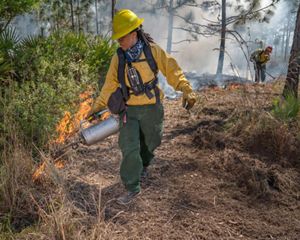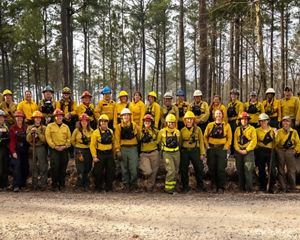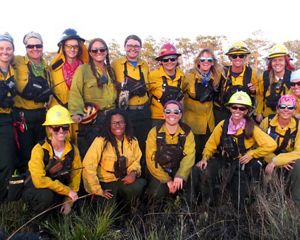After days of introductions, training sessions and shared meals, the group is ready, and ideal weather conditions have arrived. Thirty or so fire practitioners have their assignments.
Wearing special protective clothes and carrying the tools of the trade, they work in teams. Some use drip torches to light fire; some make sure fire travels where it’s intended. Some measure and watch the weather. Others wet down the edges of the controlled burn—a low-intensity, beneficial wildland fire set and managed under specific conditions by trained practitioners.
The scene might not be familiar for many of us, but it’s typical for participants in any of the dozen or two Prescribed Fire Training Exchange (TREX) and Women-in-Fire Prescribed Fire Training Exchange (WTREX) events The Nature Conservancy and partners organize across the country every year to build skills and encourage collaboration in controlled burning.
Why We Burn
Many of the landscapes across North America are adapted to fire—they require fire. So, it is critical that we safely and strategically increase the use of controlled burns, for the health of these landscapes, and to improve community safety by better managing the fuels on which severe wildfires feed. These are critical elements of why TNC works with fire.
One of the main obstacles to conducting more burns is a shortage of trained fire practitioners. That’s where TREX and WTREX come in—to provide training, build relationships, share knowledge, and increase local communities’ sense of positive ownership of wildland fire. By early 2024, TNC and dozens of partners had organized more than 150 TREX events in the United States, Canada, Portugal, South Africa and Spain providing training and hands-on experience to more than 4,300 people and putting more than 175,000 acres of beneficial fire on the ground.
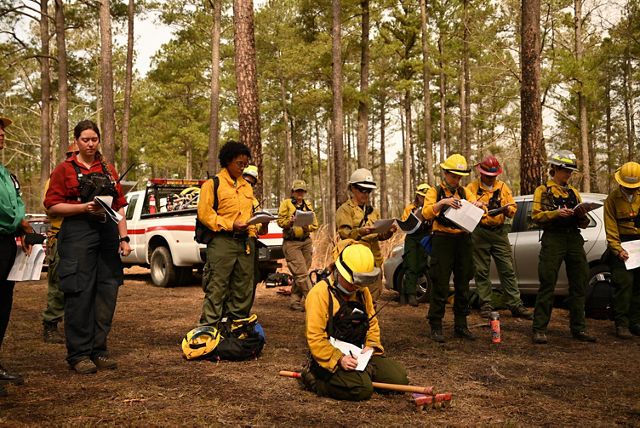
Building a Broader Workforce
These trainings do what no one else is doing in fire management: They provide a cooperative burning model that meets the diverse needs of federal and state agencies, private landowners and contractors, tribes, academics, and international partners—while incorporating local values and issues to build the right kinds of capacity in the right places.
Every training organizer works to recruit participants representing different backgrounds and experience levels. And every training event meets local on-the-ground needs, including burns focused on ecological, cultural and community safety objectives.
Typically lasting anywhere from a few days to a couple of weeks, these training events offer career fire practitioners opportunities to advance their professional qualifications in a wide range of roles, such as squad boss, engine boss, burn boss, public information officer and fire effects monitor. Increasingly, the events offer non-agency practitioners—from tribal members and students to landowners and community members—the skills, experience and connections they need to help build a sustainable fire future.
And training is not just operational. TREX and WTREX participants use new tools, technology and theories related to geographic information systems, smoke modeling, fire ecology, laws and regulations, fire-related social science and more. Participants also build relationships that span organizations and careers.

Women in Fire
While WTREX welcomes all genders, it reframes the TREX model to focus on women and other fire practitioners who have tended to experience isolation and sometimes harassment in the dominant fire management system.
Led by women fire practitioners, the first WTREX was held in 2016. Since that time, women have made up 90% of WTREX participants, and 30% of TREX participants overall. In fall 2022, practitioners at the Santa Barbara TREX—the first TREX in Southern California—conducted a controlled burn on the University of California’s Sedgwick Reserve. TREX entered its 15th year in 2023.
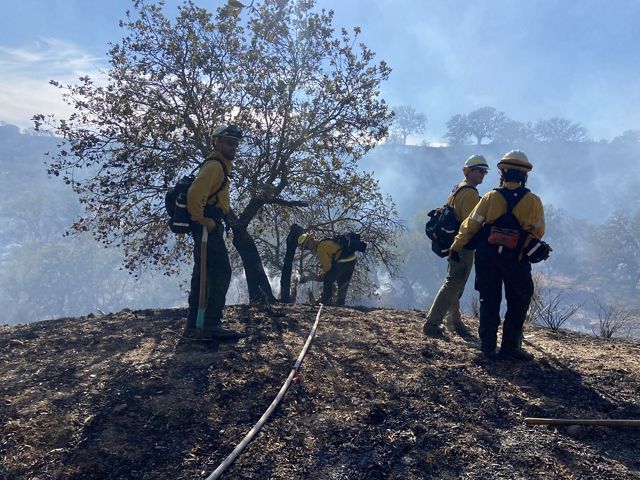
In fall 2022, practitioners at the Santa Barbara TREX—the first TREX in Southern California—conducted a controlled burn on the University of California’s Sedgwick Reserve. TREX enters its 15th year in 2023.
TREX and WTREX Are Evolving
TREX and WTREX are spreading geographically. TREX have been hosted in Spain and Portugal, and in 2022, the U.S. Northeast—and Canada—saw their first TREX events, in Maine and Saskatchewan, respectively. Increasingly, practitioners not directly associated with TNC are adapting and using these training models, too. The first international WTREX events, in 2023 in South Africa and Canada, are examples of this expansion.
These trainings are also being adapted to meet specific local needs. For example, in fall 2022, the first WTREX hosted by and focused on Indigenous fire practitioners was held in Karuk Ancestral Territory in the Klamath Mountains of Northern California.
The COVID-19 pandemic also accelerated new approaches. Before the pandemic, the trainings relied heavily on non-local practitioners traveling to them. During the pandemic, organizers looked to local participants to ease logistical complications—driving an important development that reflects the reality that wildland fire is a very local phenomenon, and local community engagement with it is a key element of changing how we collectively think about and manage fire.
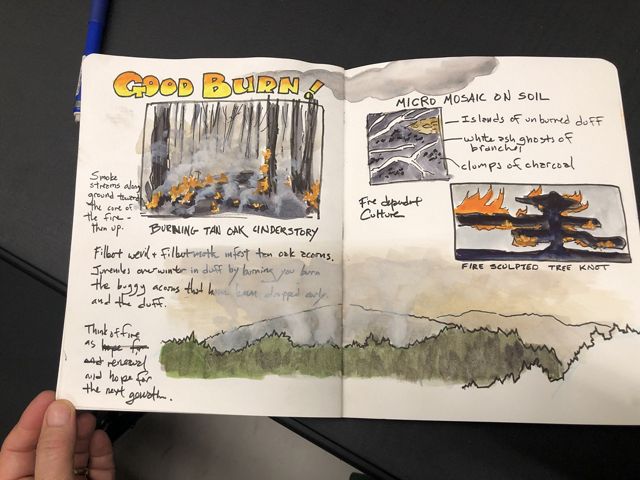
For more information, visit www.firenetworks.org.
Questions? Email fire@tnc.org.



